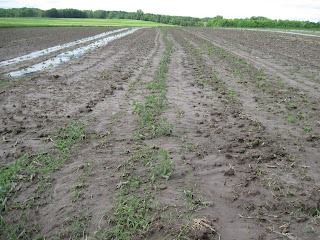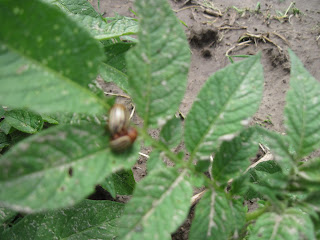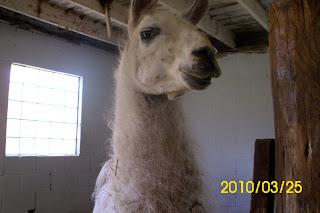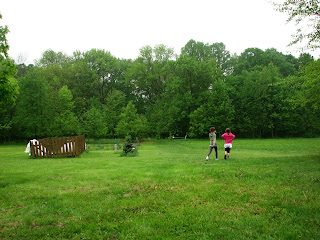It is pure joy to witness the sense of connection many children feel to our community garden. Examples:
- There is pleasure and competence that older children feel as they cut flowers and arrange beautiful bouquets.
- There is the sense of responsibility and care that is easy to see on young children as they plant our massive pumpkin patch, one fragile transplant at a time.
- There is the loss of focus on planting as a child slides into a sensorial experience of breaking large clods of soil into crumbles or forming mud into perfect round balls. This sensorial experience is equally important as "getting the work done."
- When the Junior High students come for the summer Apprenticeship I get to see the sweaty, tired pride that comes from hard physical work in the garden: hoeing, planting, harvesting, weeding, tying up tomatoes. This is a priceless connection to all people who work with their bodies, whether the apprentices are aware of it or not.
- At the market day, when children stop by, they often ask for a carrot. I can usually find one that fell out of a bunch. Sampling our Land School carrots is the sweetest, easiest way for children to taste the difference between an organic carrot and a store-bought one. Maybe they can taste their connection to the land.
- In the fall, there is the crinkly sound of dried cornstalks as we walk through the fields to harvest popcorn. Or the "big work" of rolling massive orange pumpkins to the wagon. Or the excitement of trying to harvest the squash before the hard frost. The children get a chance to notice their chilly fingers on a frosty morning broccoli harvest, and appreciate the warmth of the Homestead when they come in for lunch. We touch the closing of the season in a physical way.
- When we eat a meal at the Land School, the announcement of the meal includes a litany of which items were from the garden. In the summer and fall, most of the meal can be fresh from the garden.
- When children do any work in the garden, we strive to couch the work in a description of the importance of their contribution. The key is to understand that the work is necessary work, without which plants might die. This is the opposite of make-work. I think everyone feels a greater connection to a thing that requires their care for survival. Without me, this thing might die.
- We have developed cultural connections to traditional foods and people, for example through our blue corn tortilla project, our potato project, and our sauerkraut project. These connections give people a real connection to their own and other cultures.
- When we plant potatoes with the E2, we tell stories of the first people who domesticated potatoes, and how the potato they hold in their hands is a living descendant of the first potatoes that those first agricultural people held in their hands more than 10,000 years ago. It is a connection that reaches through time and space.
- Finally it is important to note that the connections continue when we bring the produce into Lake Country School to distribute to families and classrooms. When there is a pile of potatoes on the kitchen counter that the child helped to plant or harvest, that valorizes the child in the family and in the classroom, especially when we invariably notice how good they taste.
So this is the true work of the Land School community garden, to create a place for connection to the Land.
Every year we have some over-arching goals for the LCS community garden that inform our decisions. This year we are looking to extend the number and types of student connections to the gardens to encompass the entire school year.
Background
For many years our main goal for the community garden was to involve LCS students and families in the meaningful work of growing food for a membership-based produce box distribution. We also had a goal that each Elementary Classroom could have a specific connection to the community garden (pumpkins for all of E1; potatoes Class F; Three Sisters, fruit trees and squash for Class G; garlic and popcorn for Class H). In 2004 we substituted a market-style for the membership box, so new families and others who hadn't purchased a share could also enjoy Land School produce and flowers. We also shifted our harvest season from beginning in mid-June and ending in mid-September, to beginning in mid-July and ending in late October. This allowed for more markets during the part of the harvest season that happens during the school year. It also allowed our new Junior High Residency program to eat out of the garden at least during the Fall and early Winter. One of our new goals was to produce more "fall crops," and conveniently our Elementary connections are almost all fall crops. So it offered enhanced student connections. By 2010, we were producing enough fall crops to offer a "holiday basket" of the remaining garden produce the week before Thanksgiving. In the Fall of 2012, we did something that we should have done years ago. We offered market "credit" to each of the levels at Lake Country School. They sent students or staff out to choose produce and then they used the produce all week for soups and other creations. This was a wonderful new connection. The school was permeated with the smells of Land School produce cooking into one thing or another.
Over the years, the gardens have grown. When Jen and I started, the gardens were primarily near the farmhouse, with some sweet corn grown for us by a neighbor in the big field where the Homestead currently sits. Because of our experience growing on a farm scale and the equipment that we brought from our other farm, we were able to move some crops out to the big field and scale up. We added the pumpkin project for the Harvest Fest, and added winter squash, popcorn, onions and potatoes to the field grown crops. Later we installed a hoophouse near the Homestead and moved our tomatoes in there. Recently we have been growing fall broccoli family crops in the big field, as well as dry beans and sunflowers. The garden has been kept for intensively hand-cultivated crops, such as lettuce, green beans, herbs, cut flowers, garlic, carrots, beets, and greens. The addition of a deer fence to the garden in 2008 greatly improved our results with certain crops. We have been slowly adding perennial fruit. Every year our orchard grows by one or two trees. In 2010 we planted some blueberry plants and raspberry plants. Our plum trees and currants have come into their own. The word has been MORE, every year. But this year our plan is not simply MORE food, but rather MORE connections. Our plan is to grow as much food as in previous years, but increase the number of student connections to the garden.
Main Goals of the Land School Gardens for 2013
- Go big for fall crops (these are ready during the school year when students help harvest and classrooms can enjoy them).
- More broccoli family crops that are ready in September and October.
- More winter squash.
- More onions and leeks.
- More carrots and beets.
- More kale.
- More potatoes.
- Build a root cellar near the Homestead to store food for the use on Farm Stay and for winter markets (potatoes, carrots, beets, turnips, more?).
- Attempt to can or freeze more sauerkraut, salsa, tomato sauce, pickles, and more.
- Do not grow tomatoes, peppers and eggplant in the hoophouse, instead grow salad crops that can be harvested during the winter. We will grow the tomatoes, peppers and eggeplant in the big field instead, and the result will be that we will have fewer tomatoes, peppers and eggplant and they will be ready later, but the payoff in potential winter harvest will be a fun experiment.
- Grow more grains to be dried and eaten and used in classrooms during the fall and winter. This includes continuing to grow dry beans and dry corn, as well as a small patch of oats and wheat. We are experimenting with growing the grains in a big "polyculture" of corn, beans, squash, oats, wheat, and sunflowers. We are hoping to have dry beans and prepared tortilla masa to bring in to winter markets.
- We love permaculture (look it up if you have not heard of it before). We are trying hugelkultur, polyculture and sheet mulching this year.
- To balance these goals out, we have planned to start the markets a week later in the Summer and go one week longer into the Fall. We plan to have fewer members (45 versus 60) and have more produce available for use on the Farm Stays, in Classrooms, and for winter markets (which we have not yet scheduled, but we hope for once a month).
Updates (June 24th, 2013):
- The wet weather has prevented us from planting much of anything in the garden by the farmhouse. We have watched the weeds grow just fine in the garden though.
- Our first plantings of green beans and carrots rotted in the garden soil. Both have since been replanted and are up - but will be later than usual.
- The cool weather has meant that the tomatoes, peppers, eggplant, cucumbers, and zucchini are just sitting there waiting for heat. This week is warm though. My guess is late July for cukes and zukes and late August for nightshades.
- The potatoes look good. Healthy, happy plants. Knock on wood.
- Onions went in late, but look decent. As do the leeks.
- Garlic is slow, but good looking too. I hope it is ready for Garlic fest.
- Salad mix and radishes have germinated and should be ready for the first market week.
- Pumpkin and squash patches are happy.
- Flowers are planted and there will be cut flowers every week.
- We should have 5 or six straight weeks of bicolor sweet corn, starting sometime in mid-late August.
- Dry beans mostly came up and we have like 8 or 9 varieties. Lot's of dry corn and popcorn.Yum.
- Fall broccoli are up in the greenhouse and getting ready for planting in early July.
More Updates (July 9th, 2013)
- It has been hot and dry for most of the last 10 days (until the thunderstorm today).
- This heat has been good for the cukes and zukes, pumpkins, peppers, tomatoes, eggplant, and corn. In fact I can see a massive zucchini harvest coming up.
- The dry was very good for preparing the soil to plant fall crops and for digging and killing quack grass.
- Carrots and beets are in and waiting to come up. Usually we do 3 beds of carrots for the fall. We have six in, and are thinking about more. Beets we usually have 1 for the fall and we have 2 and a half.
- We recently relocated a woodchuck that was bringing havoc to the garden. The woodchuck(s) ate all of the edamame (waah!) and at least half of the brussels sprouts and kale. I hope there is only one, but we will keep the live trap out there for a few days.
- The deer seem to like our hull-less oats and dry beans. Lots of grazing has been happening. My hope is that the heat causes the beans to grow faster than the deer can graze.
- The onions, pumpkins and squash are coming along nicely. Weeded by JH apprentices.
- The apprentices also helped weed the summer carrots and they planted the last of the corn.


























































































